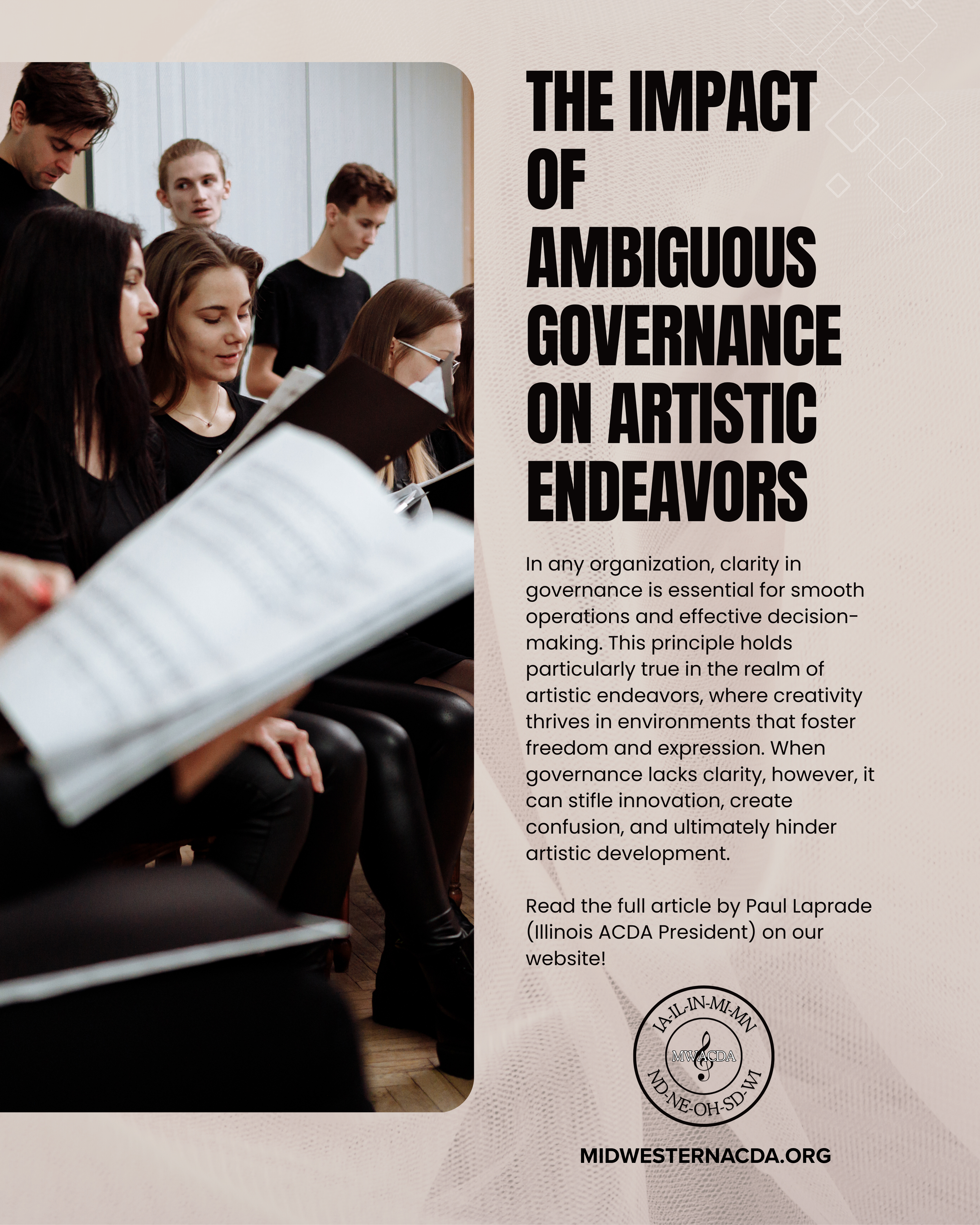
Paul Laprade
President – Illinois ACDA
In any organization, clarity in governance is essential for smooth operations and effective decision-making. This principle holds particularly true in the realm of artistic endeavors, where creativity thrives in environments that foster freedom and expression. When governance lacks clarity, however, it can stifle innovation, create confusion, and ultimately hinder artistic development.
One of the primary ways that ambiguous governance interferes with artistic endeavors is through unclear roles and responsibilities. In our discipline, collaboration is key; singers, conductors, event organizers, and administrative boards must work together seamlessly. However, when governance structures are poorly defined, individuals may be uncertain about who is responsible for what. This can lead to overlapping duties or, conversely, critical tasks falling through the cracks. For example, if an organization lacks a clear decision making framework, an artist may find it difficult to secure necessary resources or approvals, leading to delays and frustration. When an organization has grown to rely on specific individuals to achieve or guide targets and projects, the roles and responsibilities may
become unclear or even convoluted when board positions eventually pass from one member to another. Perceived and actual inequity and questions with regard to organizational accessibility can arise in an environment in which unclear roles and responsibilities exist.
